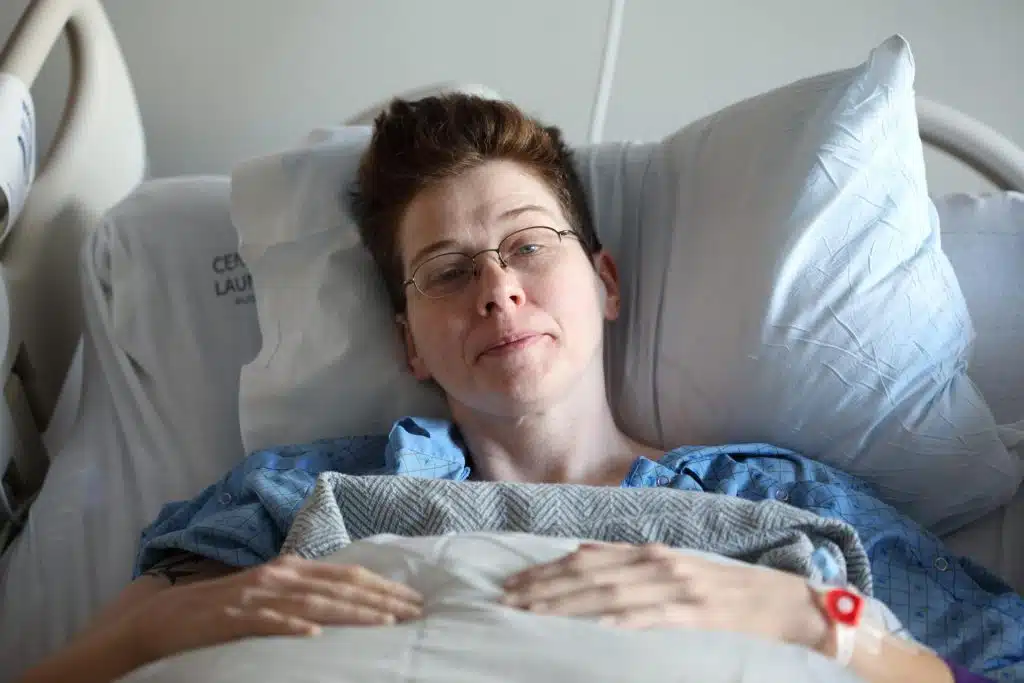What to do if you suspect you have food poisoning?
Food poisoning can be one of the worst experiences a person can go through, often including debilitating nausea, vomiting, diarrhea, stomach cramps, fever, and overall muscle pain. In fact, it can feel like a living nightmare that lasts from a couple of days to weeks or even months. And since one-in-six Americans get food poisoning each and every year almost everyone has experienced food poisoning at least once in their lifetime. Many of these, approximately 128,000 according to the CDC, require hospitalization and, unfortunately, approximately 3000 will never return home.
Given the severity of the damage caused by food poisoning, including medical bills, lost wages and time, and other costs, very rarely does an individual have a good sense of what he or she should do, and why. This is odd when you consider other types of personal disaster, such as an automobile accident or a tornado where people tend to know what to do – even though these are far rarer than food poisoning. For an auto accident people call an ambulance, if needed, contact the police for a police report, get statements, take photos, and contact their insurance carrier. When a tornado is coming people seek shelter, and afterwards look for survivors and get medical attention, watching for powerlines, and again contact their insurance carrier. In both, while secondary to medical treatment, contacting an insurance carrier is an acknowledgement that at the end of the day, everyone is responsible for their actions they take (or fail to take) that cause injury to others.
But what about in case of food borne illness? In cases of food poisoning, there are four things victims need to do:
- Seek Medical attention;
- Request a stool test or gastrointestinal pane to identify the pathogen, it possible;
- Make sure the local Health Department is notified of the Food Borne Illness; and
- Contact a Food Poisoning Law Firm to identify the insurance/entity at fault.
Seek Medical Treatment – This includes Requesting Proper Testing to Identify the Pathogen
The most common thought that people have when experiencing symptoms of food poisoning is, “it will pass if I just get some rest.” Sadly that is not always the case. When dealing with food poisoning, receiving the proper medical care and diagnosis can make a significant difference in the amount of time an illness can last and how severe the symptoms can get. For victims of food poisoning, from a medical point of view, treating the current symptoms is the best initial course of action. Intravenous fluids (IVs), medication to combat nausea and vomiting (such as ondansetron), and pain medication (such as Tylenol), can all be part of a treatment package that can go a long way towards lessening the severity of suffering and preventing complications such as dehydration, kidney failure, and/or other severe side-effects such as tachycardia and even death.
Often medical providers will opt to treat the symptoms, but at the same time disregard determining the etiology (source) of the illness as a practical matter even though there are simple tests available to identify many, though not all, of the 31 most common pathogens. The most common is the simple stool culture, by itself or as part of a more inclusive gastrointestinal panel, which will identify many of the most common pathogens. Bacterial infections, which can be amongst the most severe, account for nearly 5 million cases in the U.S. annually, and most of these show up on a simple stool culture. Salmonella alone accounts for 1.3 million illnesses each year here in the U.S. Parasites also account for over 2 million illnesses annually, and again many of these will show up in a gastrointestinal panel or a simple ova and parasite test. More specific blood tests, such as a Hepatitis Panel, or a blood or cerebral spinal fluid culture, are also tools that can be used to identify illnesses such as Hepatitis A or Listeriosis, neither of which routinely present with the normal gastrointestinal illness associated with food borne illness.
Testing to determine the source is often done by medical professionals who are trying to be thorough, especially in a hospital setting, but it is not necessary to recovery and as such it is often ignored. It is a vital part of a complete plan on responding to food poisoning, however, for reasons that are discussed below. When faced with food poisoning, victims should request a stool culture and/or a gastrointestinal panel be performed whenever it appears the primary medical treater is not ordering one themselves. It cannot hurt, and even if such a test turns out to be negative, it is nonetheless a vital part of fully recovering from food borne illness.
[Due to the recent COVID pandemic, many people have tried to avoid hospitals and clinics. This is understandable. But it also overlooks that a simple stool test can be ordered through a virtual visit online or simply by picking one up at a local office or clinic with minimal contact required.]
Notifying the Local Health Department – Identifying the Pathogen, Tracking the Source, and Stopping the Spread
If a stool culture, gastrointestinal panel, or ova and parasite test is positive, then by law the medical treater will report the finding to the local or state health department. In those cases, this second step is automated. Any victim of food borne illness who is positive for one of the “reportable diseases” (these are a list of the pathogens that cause most food borne illness outbreaks) will then be contacted by a health agency investigator to try and track the origin of the pathogen (what food it came from). When proper testing is not performed, or it comes back negative, it is still important for the victim to reach out to the health department and let them know they acquired food poisoning and let them know what food or food establishment (restaurant) they believe caused their illness. This is especially true for the millions of food poisoning victims who acquired a viral infection, such as norovirus, rotavirus, sapovirus, or astrovirus, which according to the CDC happens to approximately 30 million Americans every year. A standard stool culture will not identify these viruses because they require much more specialized testing usually only done at a state laboratory. The health departments will usually note any report for food borne illness, but if the number of reports coming in increases to a significant level, they will launch an investigation.
Why is it so important to make sure that all food poisoning cases are reported to a local health agency?
There is a network of state and local health agencies, which in conjunction with the Centers for Disease Control and Prevention (CDC), are tasked with identifying and preventing food borne illness. There are two ways to identify o food borne illness outbreak. The first is to identify a group of people who all become sick from the same pathogen during a relevant period of time (a “cluster”). The second is to identify a large number of food poisoning cases during a short period of time in a particular geographical area.
Identifying the Pathogen “Cluster”
The CDC, along with its state and local partners, has a very advanced system in place to identify outbreaks. When victims of food poisoning have a positive stool culture, for example, this information is passed on to the local health department. Very often, the sample is sent to the state lab for further testing. This is especially true when either a very dangerous, rare of an unusual number of cases of a particular pathogen are reported in a relevant time-period. For example, if a Shiga toxin producing e. coli (“STEC”) case is identified, it would be sent to the health department lab to identify the serotype. E. coli o157:H7 is a particularly dangerous strain, with a hospitalization rate of nearly 50%, often identified in food borne illness outbreaks. Once the serotype is identified, a lab may want to identify its genetic code – once that is done, the data can be put into PulseNet, the registry of infectious diseases. If it matches other entries, an outbreak may have been identified. Through this method, investigators can link cases in different states or even nations to consumption of a single contaminated product.
How helpful is this? Without the help of PulseNet, outbreaks could go on indefinitely. But when a health department links cases from different parts of the country, the health investigators can look at the common foods eaten by the victims. Once the tainted product is found, the outbreak can be stopped by issuing a recall. This information is also vital in making a claim to recover damages. Once a person has identified the pathogen that made them ill, if the health agencies can trace it back to the source, most of the work is done in identifying what insurance policy/entity is responsible for the damages.
Identifying a Source before Identifying the Pathogen
When a pathogen is not initially identified, such as is often the case of a Norovirus outbreak, the local health agency is nonetheless put on notice by the number of complaints or reports it receives of food poisoning. This often happens when a sick employee or customer enters a restaurant and dozens of patrons over the next day or two either show up at local hospitals or call the health department with complaints. When a significant number of illnesses happen in a close temporal setting, health investigators know they are looking at an outbreak. These investigators may already suspect a particular restaurant, a daycare facility or school, or some other source, but as of yet do not know what pathogen is making the individuals sick. They will often ask victims to voluntarily provide stool or blood samples for advance testing, or visit the institution to take samples of the remaining food to see if any test positive for any pathogen. In some cases, the pathogen is never identified, but at least more individuals are not becoming ill.
The ultimate goal is to prevent further illness. Reporting to the health department, either subsequent to a positive pathogen test or from various patrons who became sick all work to provide information to the local health department to help prevent the further spread of illness due to a food borne pathogen.
Contact the Food Poisoning Law Firm to Help Identify the Source and Recover from the Insurance Company/ Entity Responsible for the Food Poisoning
The same information that helps health agencies prevent the further spread of food borne illness assists an experienced food poisoning lawyer identify what entity or insurance policy is responsible for the damages suffered by the victims who ate the contaminated food. Just like in a car accident or in the case of damage to the home, in most cases the responsible party has an insurance policy in place to cover the damages. In fact in many states it is a requirement that restaurants and food producers maintain a minimum $1,000,000 in liability insurance. But that does not mean that food producers are lining up to pay for the damages caused by food borne pathogens. It often takes an experienced, dedicated law firm that is dedicated to food poisoning cases to understand how to prove an individual case of food poisoning is linked to any particular product, and to get the case resolved.
“Does it matter what state my food poisoning illness occurred in?”
Usually not. The food poisoning lawyers at Ron Simon & Associates work with local counsel in each of the fifty states to prosecute claims on behalf of the victims of food poisoning outbreaks. In the vast majority of cases, there are no local law firms with experience with food poisoning outbreaks. In fact, we are one of the few law firms dedicated to this unique area of law. In addition, many food borne illness outbreaks will impact victims across the nation or significant parts of it, meaning the litigation may necessarily be in multiple jurisdictions. In these cases, or even when an outbreak is linked to a single restaurant, our attorneys work with local attorneys, bringing our experience and resources to bear, in helping resolve each case – at no additional cost to our clients. This is because we do nothing but food poisoning cases and have the experience to get cases settled.
Conclusion
Food poisoning can happen to anyone at any time, but knowing what to do when going through it can make a difference in a speedy recovery and in the amount of compensation a victim will receive. Many who experience food poisoning from a pathogen, like salmonella or E. coli, will have medical bills that need to be paid, lost wages due to missing days, if not weeks, of work, or simply will have suffered intense pain and discomfort. When these are caused by an identifiable entity, in the hands of an experienced food poisoning law firm, recovery may be possible.
“If you or a family member has been diagnosed with food poisoning, or if you have fallen ill as a result of a food poisoning outbreak, speak to one of our food poisoning lawyers today. Our law firm understands your concerns and needs. The last thing you need during this challenging time is to have to deal with insurance companies, other lawyers, or being hassled by the legal system. Contact me, Ron Simon, or one of my team members, at 888-335-4901.”
Ron Simon






